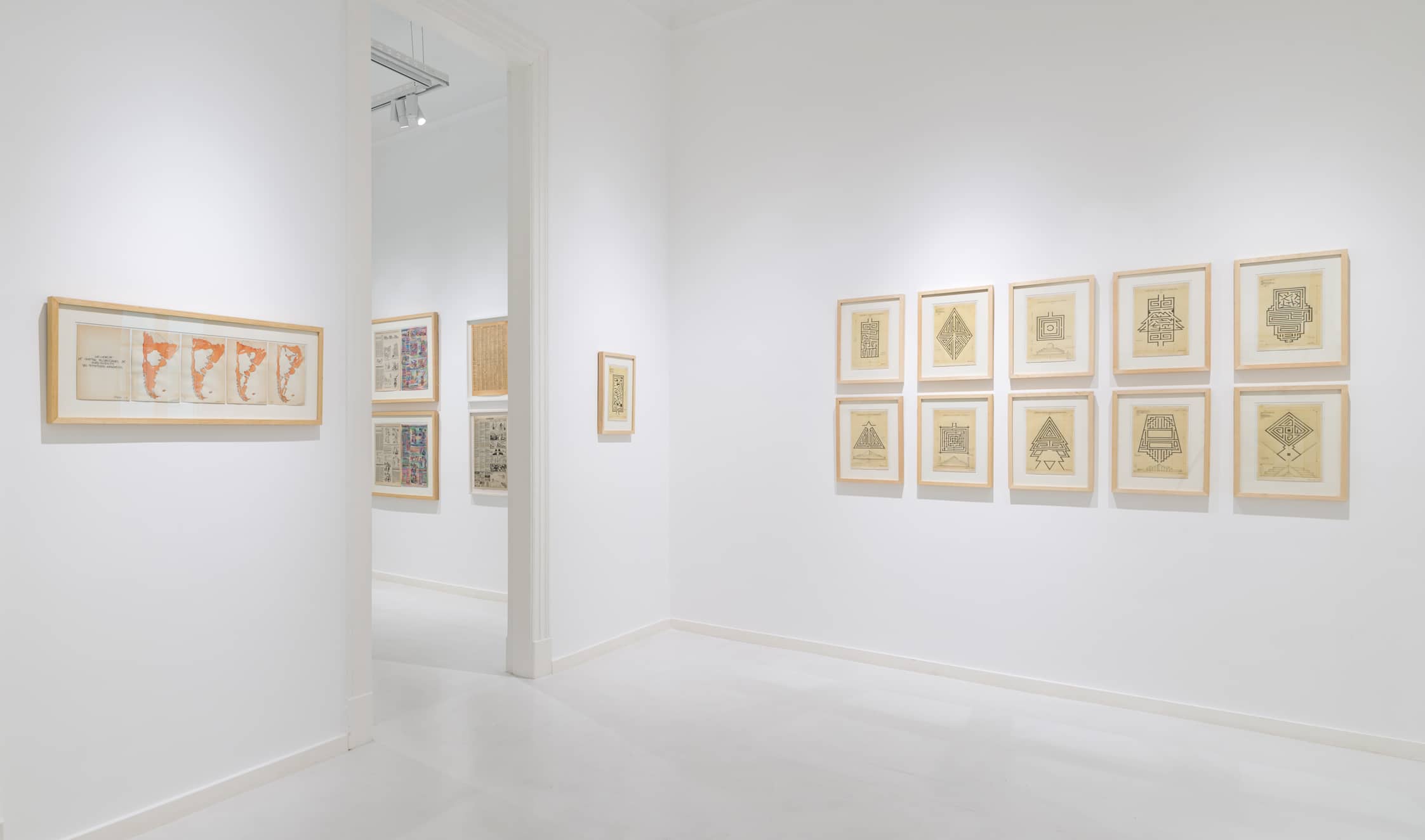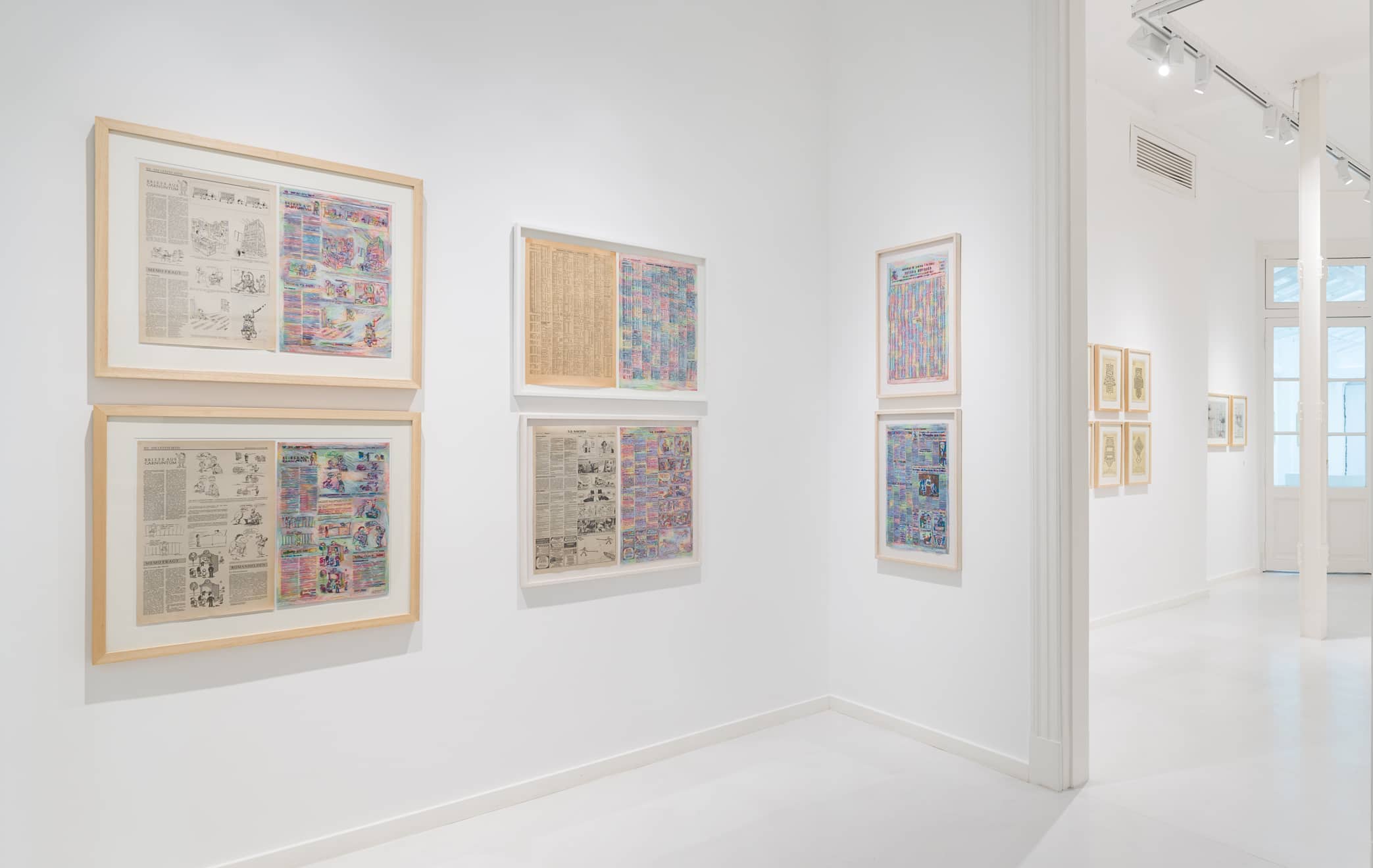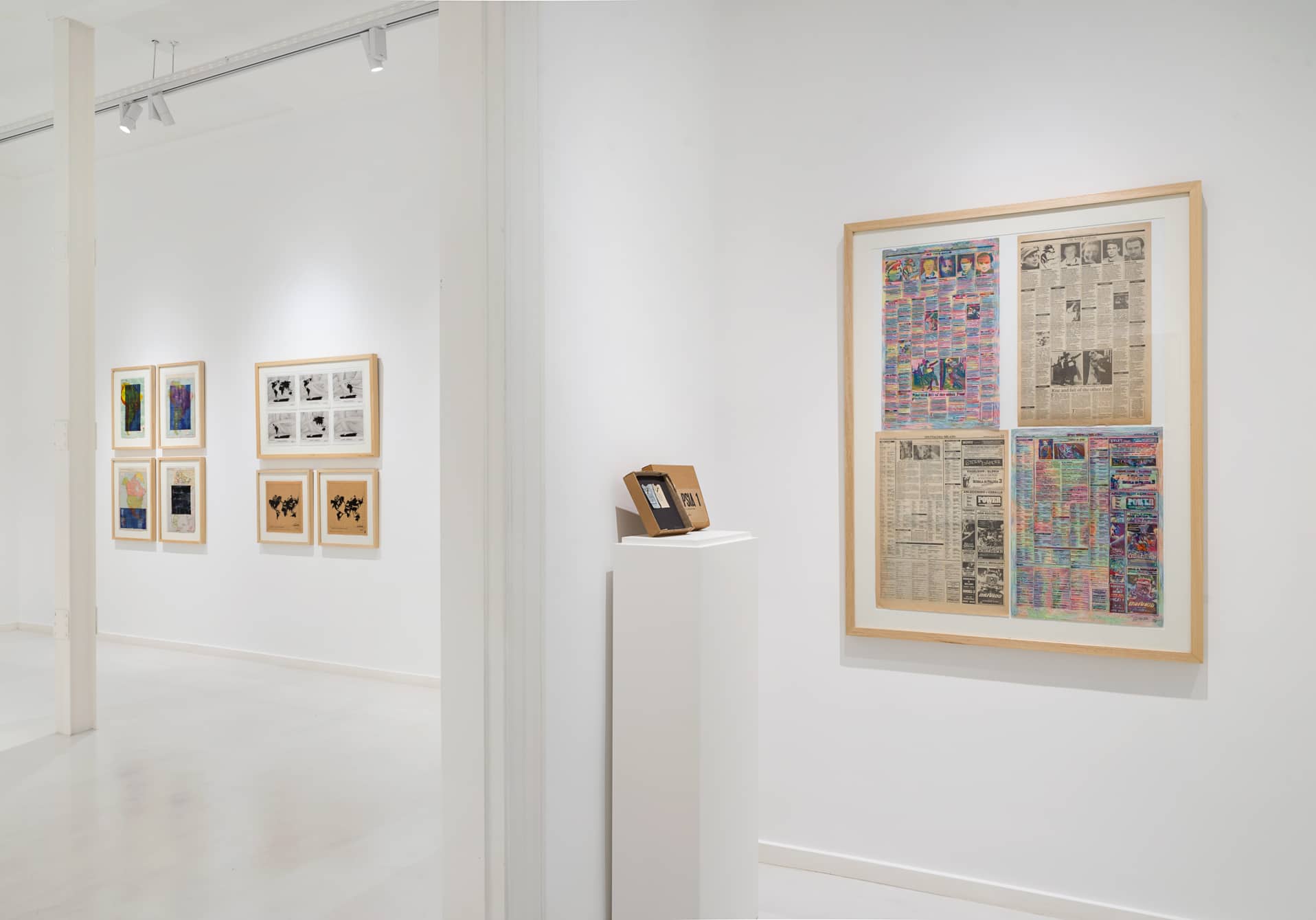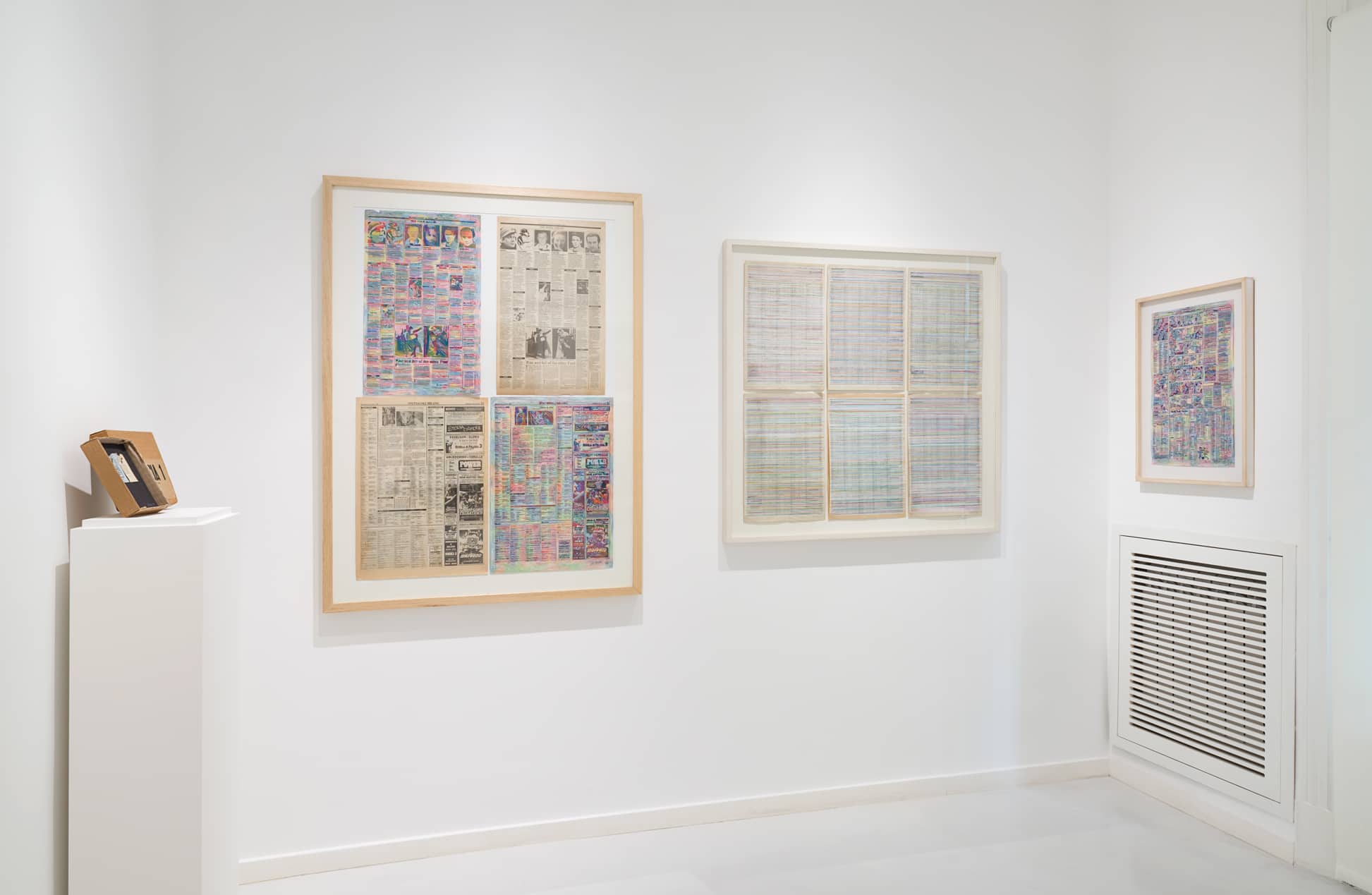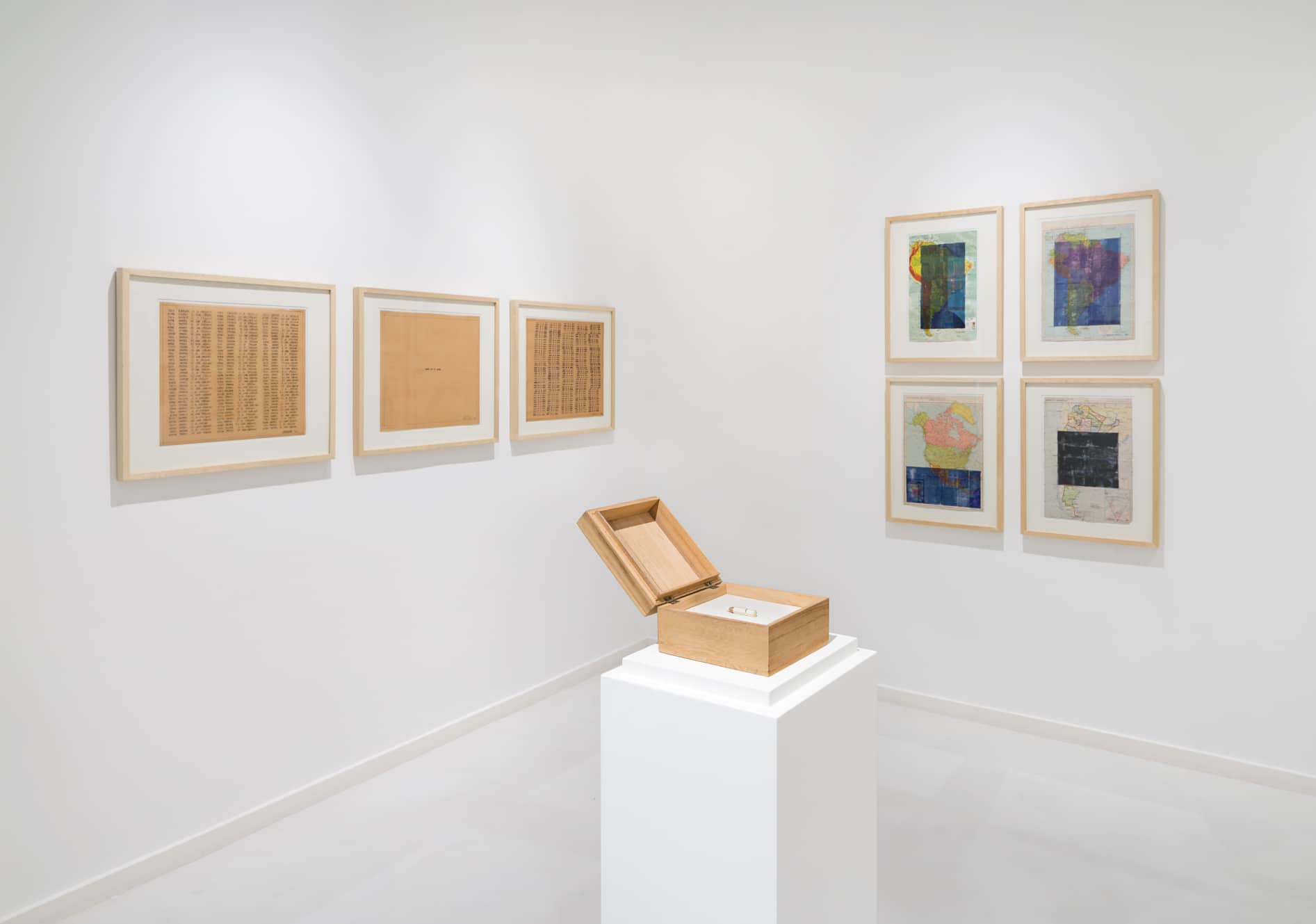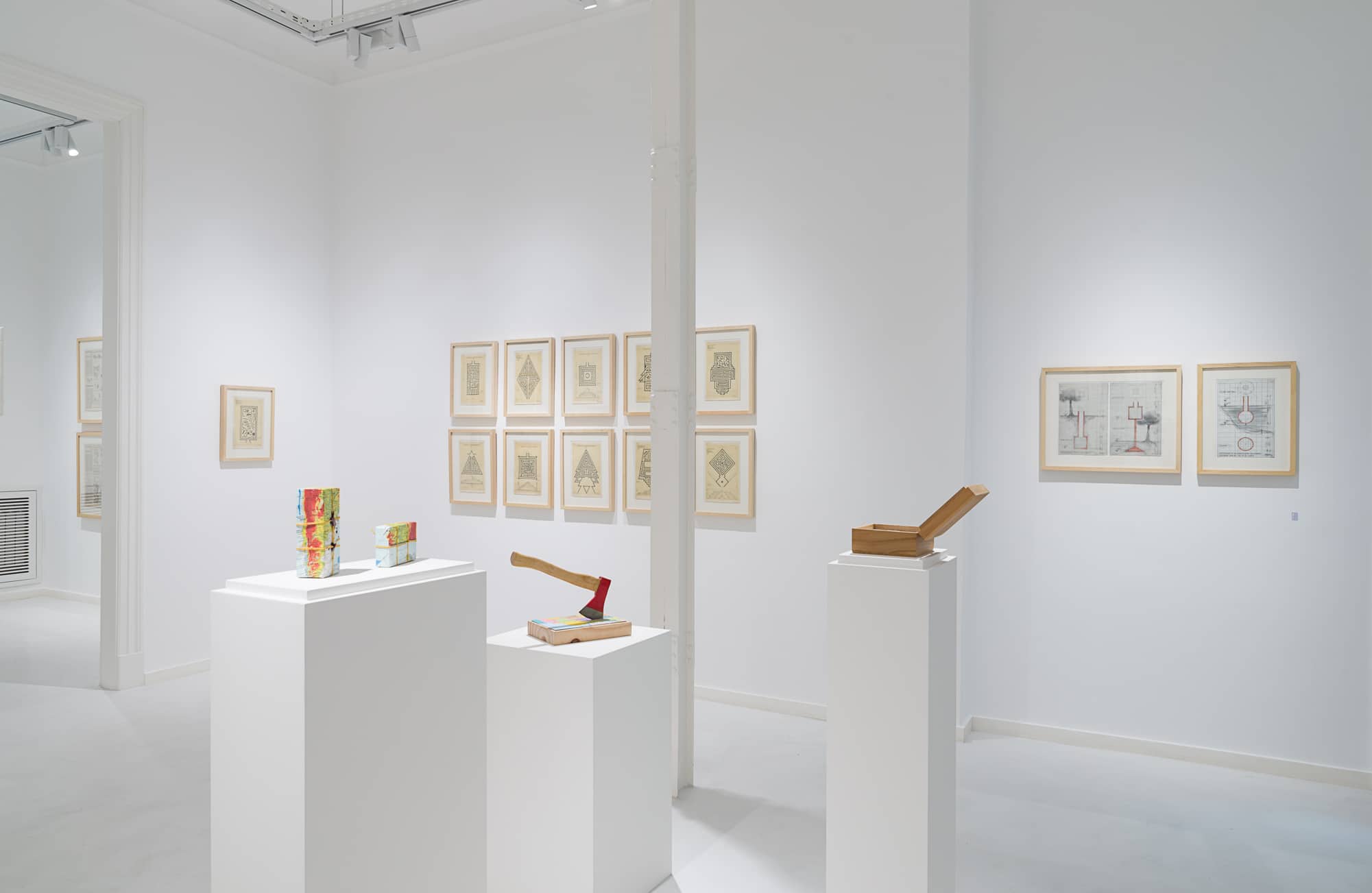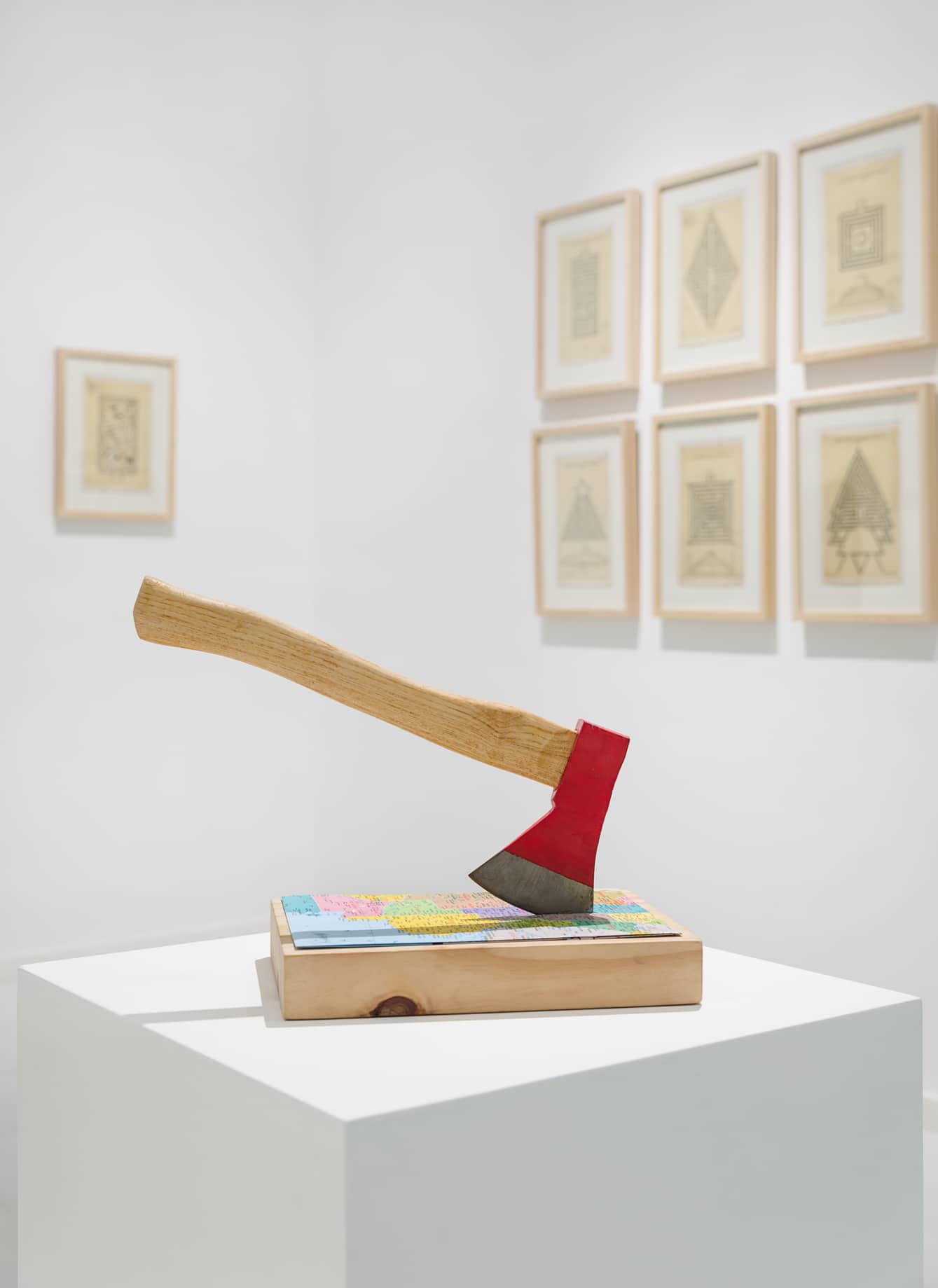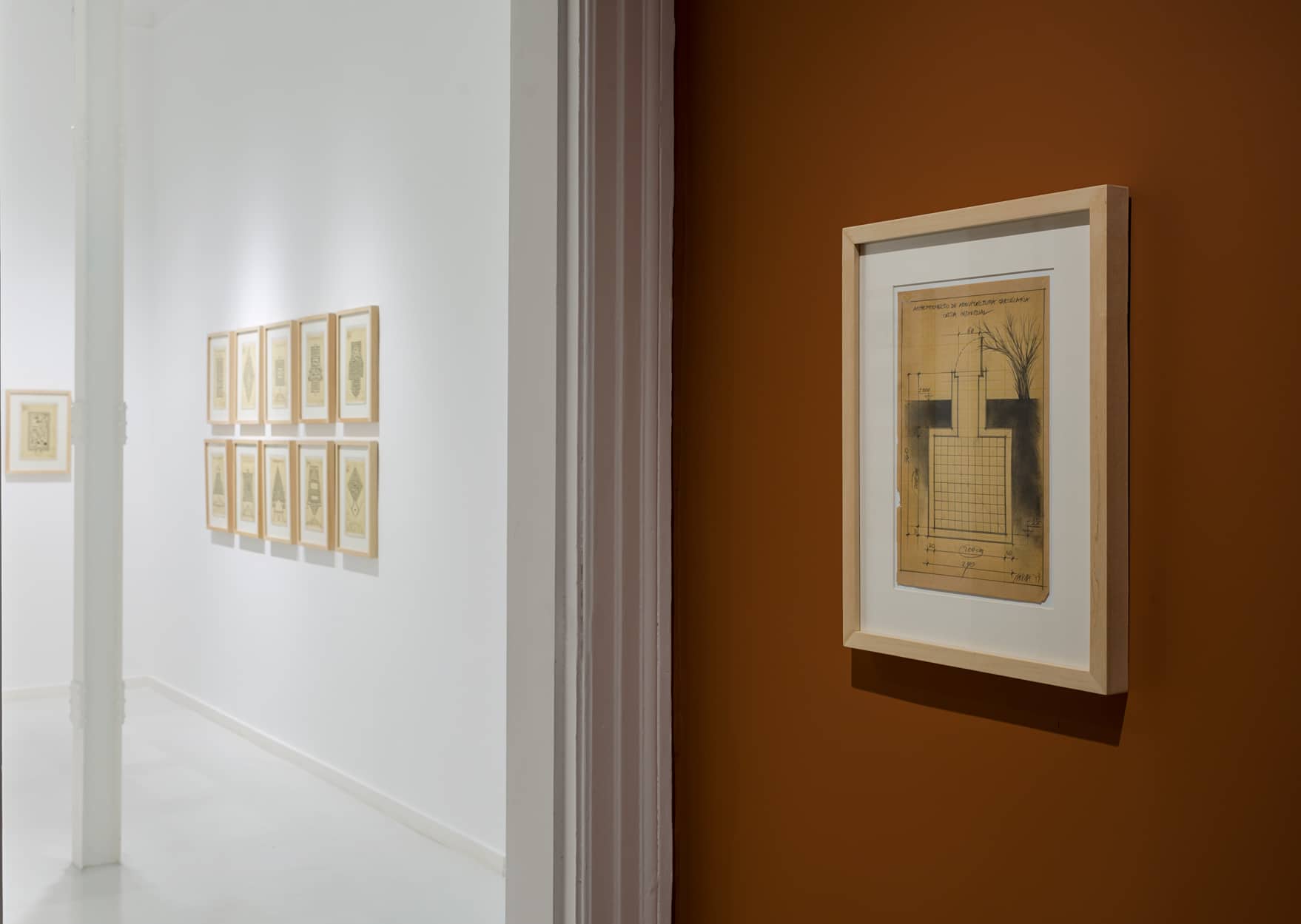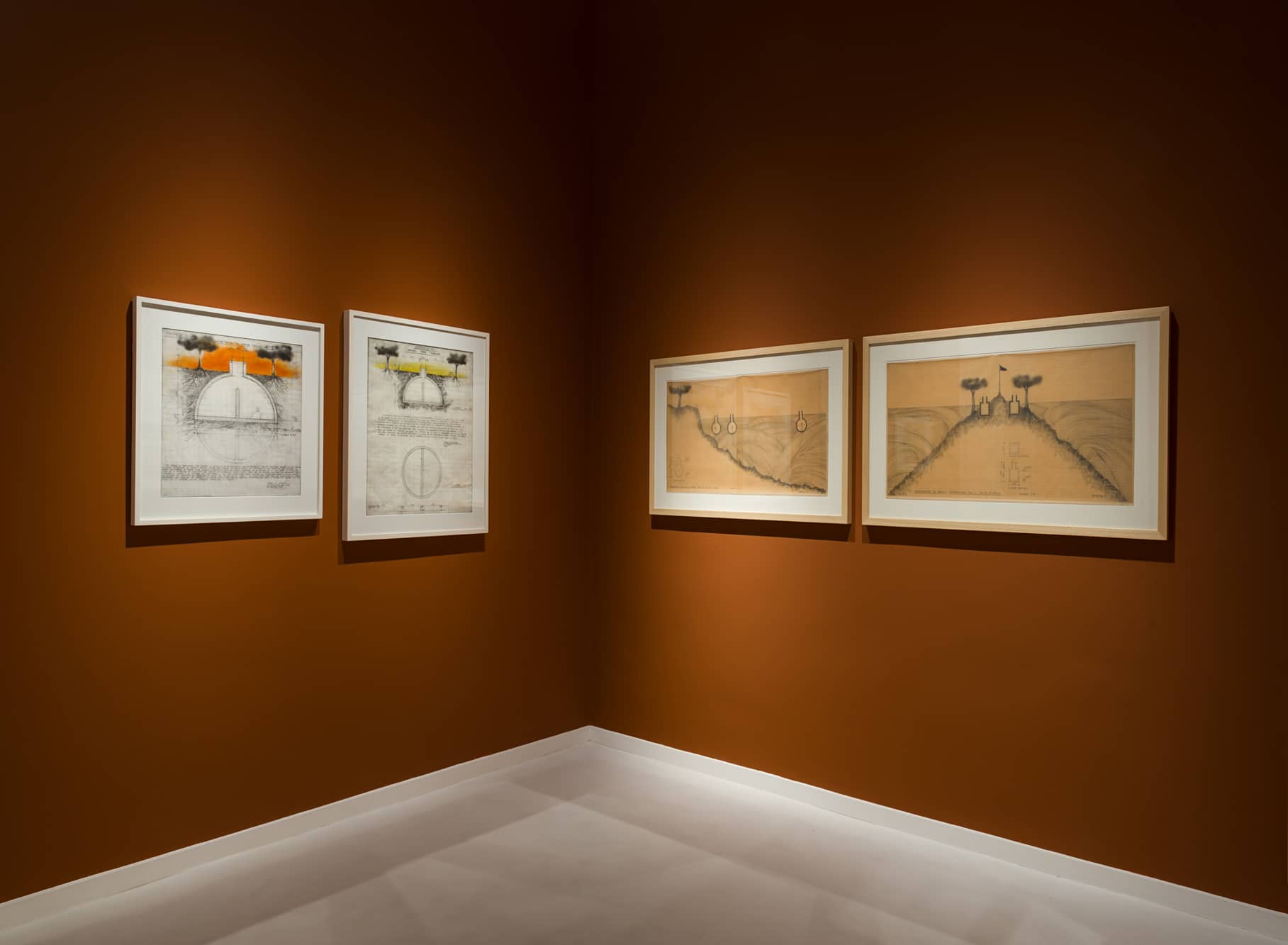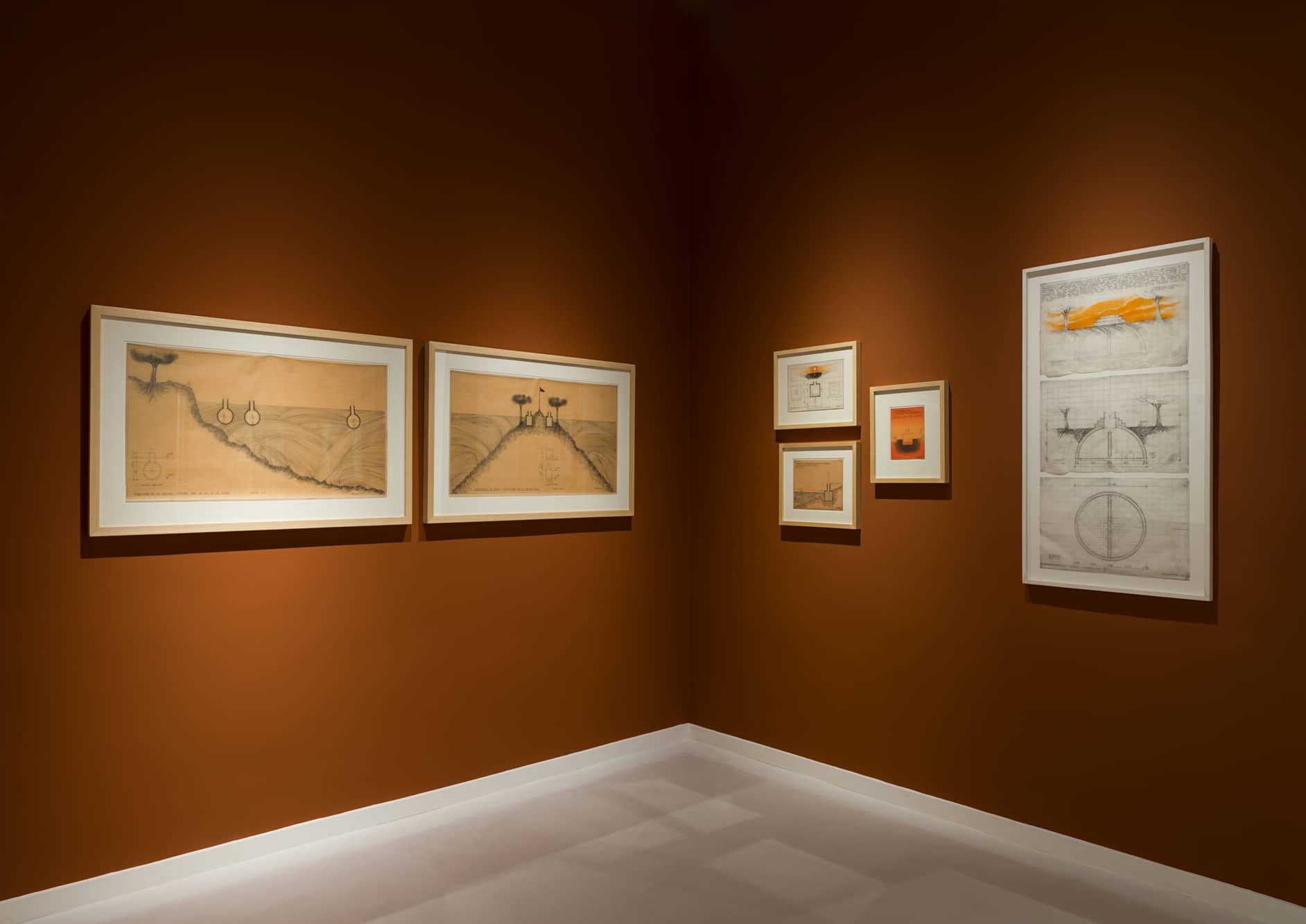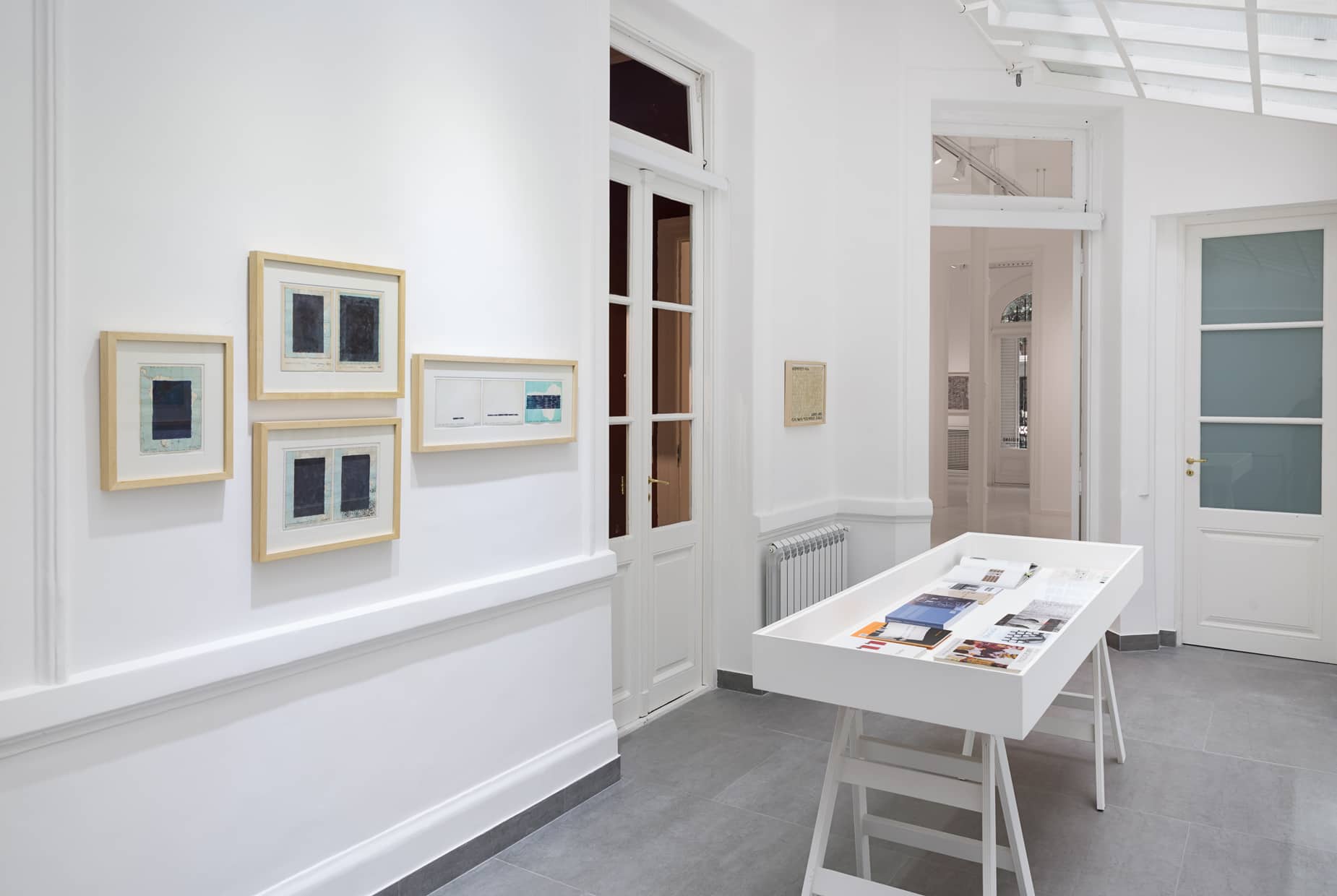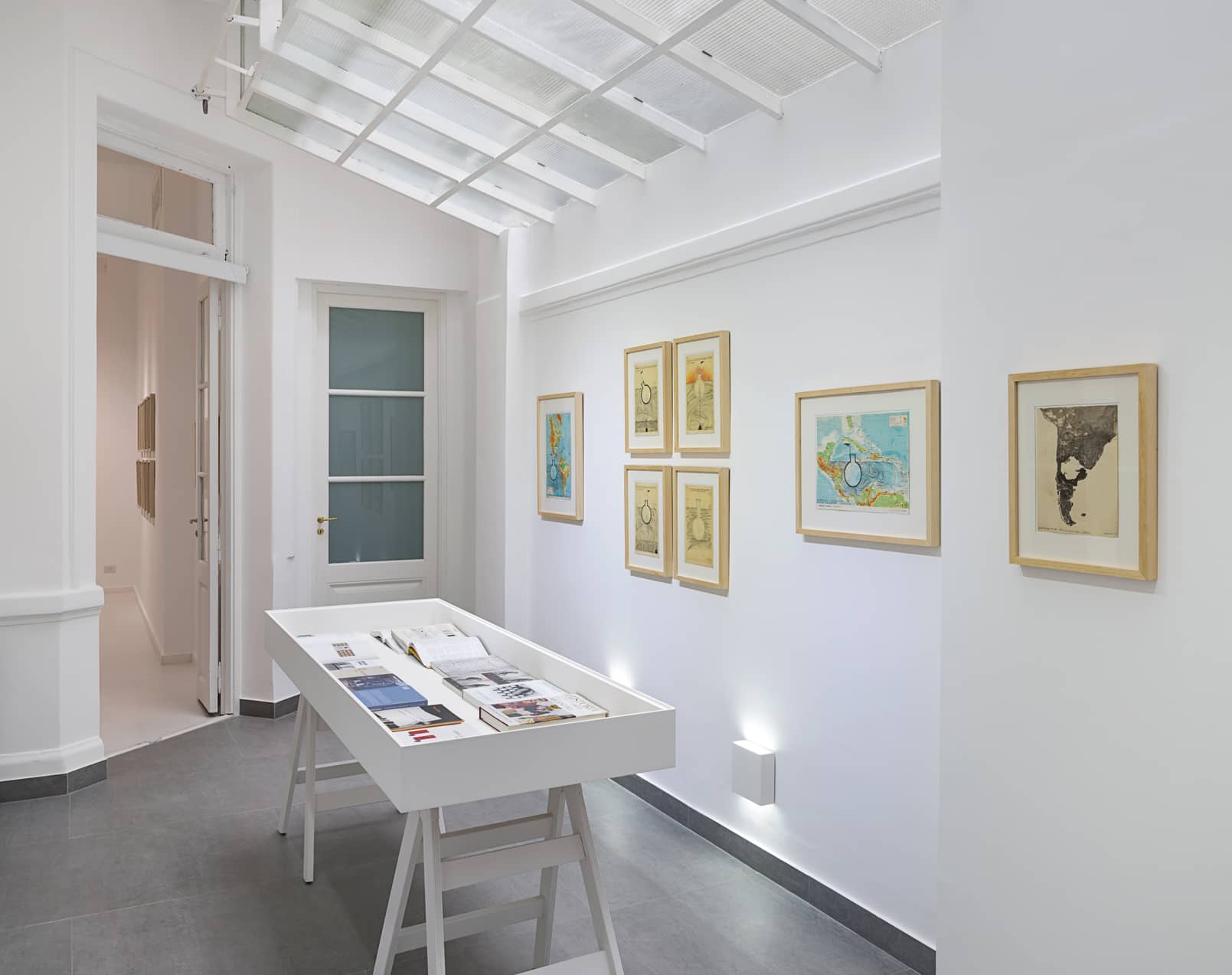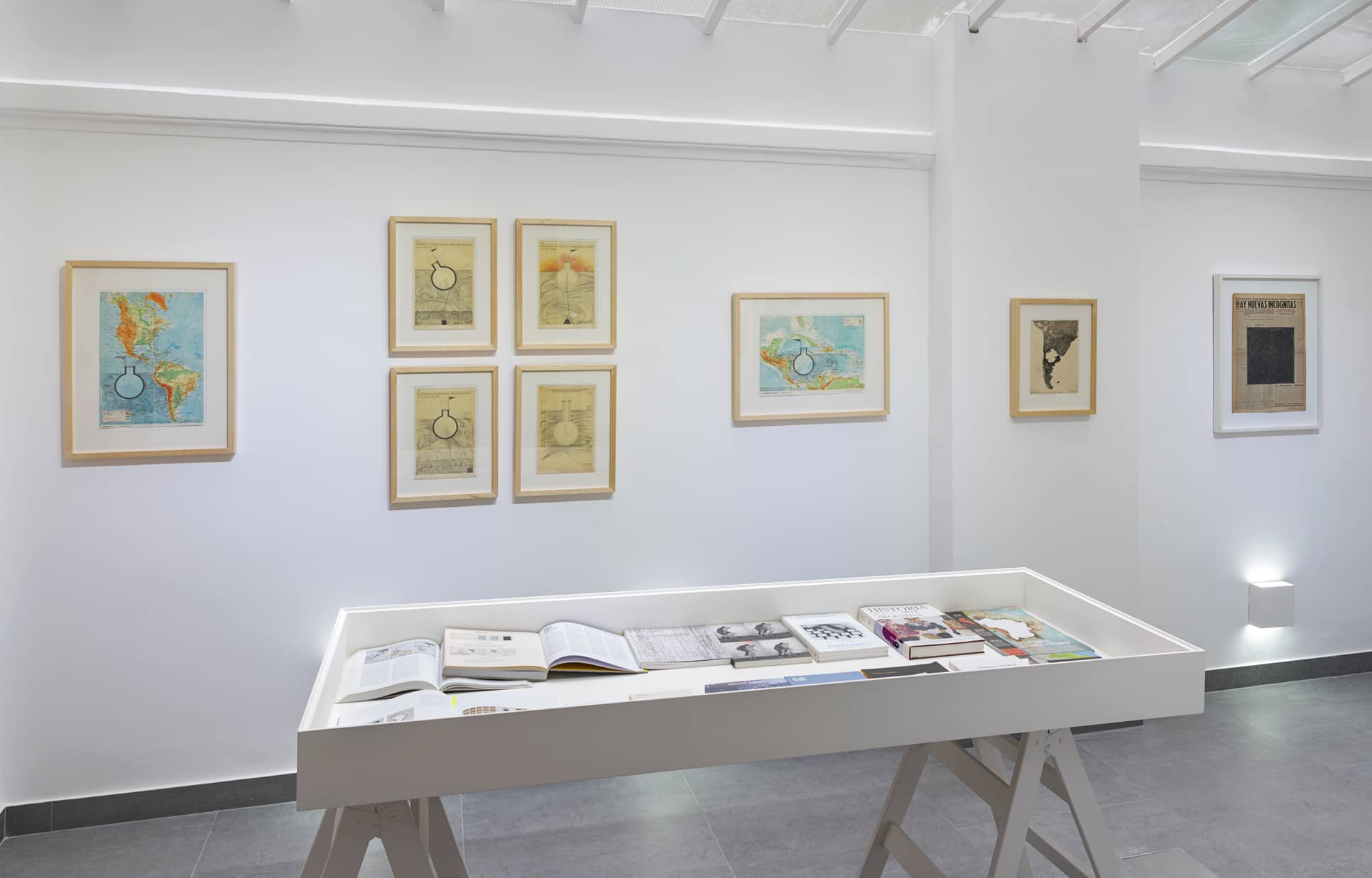Horacio Zabala
30 june - 12 august
Reflections Regarding “A Tensed Serenity”[1]
Prisons, labyrinths, cartographies and newspapers make up a thematic repertoire that Horacio Zabala has visited between the beginning of the 70s and the late 90s. “Una serenidad crispada” (A Tensed Serenity), the exhibition we are presenting, brings together unseen works from those series, put aside by exiles, migrations and changing moods that have let them on stand-by. They speak again today from the power of a collection of images that give themselves new meaning when inserted at the core of current issues; they show the passing of time and appeal to memory.
Prisons, labyrinths and cartographies were the baggage with which Zabala arrived in Europe after leaving Buenos Aires, in 1976. It was the heavy backpack that he carried with the nightmare of dictatorships, authoritarian disciplines and the tensed illusion of a serene order that would restore the usefulness of the aesthetic. As regards the newspaper series, duplicated, crossed out, obturated, it is carried out in the European context where, much more clearly than in Argentina, one could see the power of the simulation: that relationship between reality, symbols and society through communication media that Baudrillard conceptualized. The “first world” of that time was the occasion for a reflection that today, due to the expansion of mass media and technology, has become global.
It all seems to have started with Este papel es una cárcel (This Paper is a Jail), the written text and its photographic image, where the paper, as a two-dimensional limit, restricts artistic expression. The statement quickly goes from the particular to the general, and results in a true theory of art: “art is a prison.” Why would art be a prison? Because of the rules it imposes on both the artist and the material? Because of the canons it establishes and, with swiftness and indifference, then discards? The truth is that, since its beginnings, art has been a system, and the prison metaphor definitely suits it. Artistic freedom has always been subject to the patrons’ demands, the academic rules or the laws of the market. There has never been total freedom other than as the tensed loneliness inside the four walls of the artist’s workshop. In Zabala’s “prisons for artists”, the very will to give form to a material is another prison if we agree with Luigi Parevson,[2] who characterized the artist as the only human being “who forms for the sake of forming”, and that they cannot avoid that condition. Therefore, the prisons for artists that Zabala projects resonate as a memory of the ascetics, the eremites, the monks in their cells. Those who, in isolation, maximum austerity, poverty and introspection, improve their spirit, get access to the mystical or, simply, to their own creativity. The period gave new meaning to these prisons by reading them as an allegation against the censorship, the political revolts and the authoritarianism of the late 60s and forwards.
This is how Glusberg records that time in the prologue of “Anteproyectos”[3] (Draft Projects), Zabala’s exhibition at the CAYC, in 1973: Zabala tries to “make explicit the repressive structures of the society in which he was destined to act as an artist and as an architect.” In 1972, the artist had become part of the Grupo de los Trece.[4] “Anteproyectos”, the exhibition, was inaugurated on May 11th, 1973, a few days before the constitutional president Héctor J. Cámpora took office and granted pardon to the political prisoners of Onganía and his successors’ military regime. It is clear how the social and political reality of the time was, for Zabala and the Grupo de los 13, an urgent matter to address. The group’s collective poetics were based on the absolute economy of material mediums, a “poor” art, focused on signaling processual and performative issues. However, already at that time, another latent reality was gaining official relevance: the global environmental crisis. The Stockholm Conference, as the meeting convened by the UN in 1972 was called, made clear the problems the planet was suffering due to the continuous transformation that human life imprints on it. That same year the Argentinian Ecological Society was founded. With their calling to insert themselves in what was “real”, the Grupo de los Trece was a fertile ground to think about the dimensions of ecology that Félix Guattari proposed in The Three Ecologies:[5] the one referring to the environment, the one of social relations —the ways we are in a group— and the mental ecology or of human subjectivity. Understood as such, ecology is an ecosophy, that is to say, it has an ethical and aesthetic position before a truly rapidly changing world. The technical-scientific mutations, the demographic growth and the mass media’s dangerous uniformity in forming opinion and delivering information were topics for the CAYC’S conceptual and political art in its ecological approach. Since the early 70s, arte de sistemas—a category idiosyncratic to the CAYC[6]—has developed poetics through which artists signal themes such as nature and its cycles (Carlos Ginzburg, Edgardo Vigo),[7] the opposition between nature and the artifice (Luis F. Benedit, Víctor Grippo), malnutrition and world hunger (Vicente Marotta), the fallacies of modern urbanism, pollution, plagues and the destruction of cities (Clorindo Testa, Gonzalez Mir, Jacques Bedel), the archaic rituals that bring man back to nature (Alfredo Portillos) and the disciplinary institutions that threaten subjectivity, in Horacio Zabala’s case.
As an architect, Zabala understands the ways of Living, Working, Circulation and Recreation, as preached by the Lecorbusian bible, the tradition under which he studied. However, his text/manifest for “Anteproyectos”[8] reveals the extension of his poetics, for example, by taking interest in design as a rational instrument applicable to everyday life. Concepts such as the design of a trip, the design of garbage or food that Zabala not with little irony aims at, in 1973, are common languages, current in the jargon of marketing, tourism and global consumptions of extreme luxury. Diametrically opposed to this, the design of an anti-structure, a prison architecture or a shantytown points to the failure of modernist proclaims. The draft project for “an act of freedom” enthrones the poetry by softening the dystopic discourse. However, the final proposal, the destruction of a vegetal, an animal and a mineral, was already in progress…
Analyzing the coding present in the representation of space in order to expose the ideological backings that support it is the basis for his fascination with maps, “reduced models” in his words. Starting from the popular school maps that are sold in bookstores, Zabala draws a universe of undisciplined actions that cartography does not accept due to their hypothetical and, in many cases, premonitory character, such as the immense black hole that the fire has left on the map of South America at the heart of Amazonia. Un fuego eternamente vivo (A Fire Eternally Ignited) resonates in the present day with the fires caused by climate change, as well as evokes the political situation of rebellion, censorship and totalitarianism that the Southern Cone was experiencing then. The stamp, which the artist uses repeatedly, is the weapon/tool of a bureaucracy that is rushed to catalogue, select or stigmatize. It imprints its thirst for censorship on mountains, plains and rivers. The political boundaries—arbitrary, won with the force of gunpowder—break down and carve plateaus of cultural understanding or libertarian aspirations. Zabala projects hidings, deformations and sinkings, which compete with the natural or artificial cataclysms that leave entire nations “erased from the map.” Vast extensions of territory become disperse as explosive shards. These reaccommodations have the power of a symbol, of an allegation and a denunciation, along with the tension of a catastrophic demiurge. “Someone please save us from the certainties of the strategists and their projections”, the artist seems to say.
“These drawings don’t need anything more or anything less,” explains Zabala about the labyrinths he made in 1973 and which had never been exhibited before today. Contemporary to the prisons, they both belong to the genre of “ideal or visionary architecture.”[9] These draft projects were envisioned with the knowledge that they were not going to be put to practice. Regardless, Zabala inserts himself in the prestigious tradition of “drawing table architecture,” where innovation and the evocative power of shapes and imaginary parties is fruitful in modern architecture.
The draft projects for monumental labyrinths show the formal complexity—we would say baroque—of its plants, which contrasts the rationalistic simplicity of the facades shown in cross sectional view. Once again, Zabala “hides” to show. Both cells and labyrinths, imagined for a single person, are not habitats, no one could live in them. But one could certainly get lost in them: in the cells, because of the psychological alienation caused by isolation; in the labyrinth, because of the anguish of not finding the way out. Generally, labyrinths are vegetal, an expression of topiary art.[10] Zabala’s monumental labyrinths, on the other hand, are made of solid walls—surely made of stone, brick or concrete—, although it is not indicated in the image. In these various draft projects there are elements or ways to create that wink at styles, cultures and iconographies: as in the case of the fretwork, the stars or the mirror symmetries. Thus, the labyrinths seem to allude to everything and nothing; they are universes within themselves, enigmatic, eclectic, and connoted by the attractiveness of the ornament, a crime that causes tension with the functionalist morals of modern architecture.[11]
The feeling of confinement is palpable even in the linear drawing. The labyrinth is a riddle, it appeals to the walker’s intelligence on his way through it; however, it does not only engage the walker’s mind, but also their entire body. Experiencing some of these labyrinths could be an oppressive experience, such as walking around the Memorial to the Holocaust Victims of Europe,[12] in Berlin; precisely, a labyrinth in which spaces become narrower, stones block the outside, the visitor goes up and down, and the horrors of genocide are relived symbolically and physically. Inaugurated in 2005, its abstract allegory makes it a true contemporary monument.
Zabala’s labyrinths express their own time period, the disruptive 70s, which were lived as a dead end—and, in fact, they were for many people—, but, without a doubt, they resonate in current artistic strategies aimed at commemorating the tragedies of contemporary times.
In the early 80s, in Vienna, where Zabala and his family settled, the artist began working on a series of real newspapers (ready-mades) that were duplicated and crossed out. Italian philosopher Mario Perniola wrote the prologue for these works and pointed out that the conceptual operation of “censoring” the newspapers, crossing them out, implied thinking that “nothing that belongs to the world of mass media deserves to be saved: there are no remnants of the catastrophe that need to be preserved.”[13] In effect, Zabala crossed things out to say “don’t let yourselves be manipulated” by biased information, pre-digested by the media. However, he kept the visual aspect of the newspapers, the “page layout” that identifies them as such and which, like the stamp, grants them a value of truth or, at least, reliability. The topic of representation is always present in Zabala’s work and, in this case, the transformation of news into mere visual signs brings Guattari’s ecology back on the table.
Guattari points out: “Post-industrial capitalism, which I prefer to describe as Integrated World Capitalism (IWC), tends increasingly to decentre its sites of power, moving away from structures producing goods and services towards structures producing signs, syntax and, in particular through the control which it exercises over the media, advertising, opinion polls, etc., subjectivity.”[14]
As if he were replying to these ideas, Zabala traced with mocking and fun spirits, one by one, the visual configuration, shape and light quality value of the numbers of the Geneva a Paris stock exchanges’ information, the cinematographic spectacles with their sparkling Hollywood stars on the Italian press, or political and crime news in other European newspapers. Signs and more signs of unquestionable beauty on these copies on tracing paper of newspapers create metaphors of the “stupefying and infantilizing consensus”[15] of contemporary mass media. Original and duplicate, one next to the other, allow us to see what it is and what it seems, an open metaphor—at times unresolved—, that is fruit of an imagination that is tensed by the excesses of the constant densification of stimuli to all imaginable consumption.
Soon before these disheartened reflections, still in Buenos Aires, Zabala obturated an article from a local newspaper dated March 2nd, 1976. Un pronóstico sombrío (A Bleak Prognosis) lies on the page of a newspaper from merely 24 days before the military coup that overthrew Isabel Martínez de Perón and indeed instated more bleak years. Paradoxically, the work takes the name of a visible part of the newspaper where there is mention of the severe economic crisis that the country was suffering in those days, corroborated by the big front-page headline. A black monochrome covers what we presume is the political piece of news that, days later, we know will bring forward the catastrophe. Zabala does not sign the work with an exact date; he tricks the reader into wondering whether it is a certainty or an intuition. In any case, he is implying that chronology is a mere objective record of a reality that is impossible to conceal. His ethical/aesthetic concern was to point to the complicity between the media and the establishment that has the power at the time, the operation to overlap, cover up information and, thus, eventually, put a stop to every possible revolt. Without a doubt, these newspapers are a portion of our recent history which, mediated by the press regardless of ideology, Zabala works to reveal: show its setbacks, its fissures, read the space between the lines.
Regarding the intervention on the newspapers, Perniola asked himself in 1991: Does anything positive come about from this conceptual operation? Something like a reestablishment, a regeneration of art?[16] These inquiries that the philosopher thought could not be answered at the time are precisely the ones that Argentine artists made during the 90s. Can we influence social processes, give art the role of agent? Some answered no and took delight in ironically—or not really—showing the conditions of postmodernity and the dominant neoliberalism. Others contributed to a not-so-joyous revival of the political art from the 60s and 70s. Both groups have in common that they were intellectually led by the artists of those generations, who acted as “gurus” for the younger ones waiting to have their moment. Horacio Zabala, since his return from Europe, has been one of those leaders whose poetics tune in to criticism, to reflection, wherever it manifests itself. It is not by chance that his work has been giving us food for thought and speaking to us for over five decades.
María José Herrera
Buenos Aires, May 2022
[1] A une sérénité crispée (1951) is the title of a book by French poet René Char (1907-1988). For several works throughout his career, Zabala has used titles of other people’s books in which he finds a poetic resonance with his own work.
[2] Luigi Pareyson, Estetica. Teoria della formatività, Torino, Edizioni di «Filosofia», 1954.
[3] Horacio Zabala. Anteproyectos, catalogue, Bs. As., CAYC, 1973.
[4] Group founded at the heart of the CAYC, integrated by Jacques Bedel, Luis Benedit, Gregorio Dujovny, Jorge Glusberg, Carlos Ginzburg, Víctor Grippo, Jorge González Mir, Vicente Marotta, Luis Pazos, Alfredo Portillos, Juan Carlos Romero, Julio Teich and Horacio Zabala.
[5] Félix Guattari, Las tres ecologías, Valencia, Pre-Textos, 2ª. 1996 [1989]. Translated fragments from: https://monoskop.org/images/4/44/Guattari_Felix_The_Three_Ecologies.pdf
[6] Systems Aesthetics is a proposal by Jack Burnham from 1968, published in the magazine Artforum. Although Glusberg was inspired by these concepts, Argentine arte de sistemas is a broader category, which includes different poetics and is not equivalent to American Systems Arts.
[7] Vigo was not part of the Grupo de los 13, but he did participate in CAYC’s exhibitions before and after the group was founded.
[8] “Draft project for the design of a trip / conceiving the deformation of Argentinian territory / the design of a shantytown / the alteration of a chess set / a prison architecture / a playful and ideological monument / the design of garbage / the design of food / copying the Berlin Wall / redefining Latin America / the design of an antistructure / an act of freedom / the design of a soup kitchen / the destruction of a vegetal, an animal and a mineral.”
[9] An historical example of this practice is Etienne Boullée’s Cenotaph for Newton, from the late XVIII century, considered a key project for modern architecture.
[10] Landscape art that consists of clipping or training shrubs into geometric shapes or figures.
[11] Ornament und Verbrechen (Ornament and Crime) is a 1910 conference, published in 1913, in which Adolf Loos, a modernist architect, criticizes the use of ornamental elements in utilitarian objects.
[12] “The grid shaped memorial has 2,711 concrete slabs of various heights, all placed near each other, creating numerous passageways where visitors can walk around and enter and exit the Memorial from anywhere, [like a labyrinth].” It was designed by architect Peter Eisenman and engineer Buro Happold. https://www.introducingberlin.com/memorial-murdered-jews-of-europe?_ga=2.258531458.904485083.1654036960-1794768168.1654036960
[13] See, in this catalogue, the text by Mario Perniola.
[14] Guattari, op. cit. p. 41/42. (Translation, op. cit. p. 47)
[15] Ibidem. (Translation: ibidem, p. 50)
[16] Perniola, ibidem.
